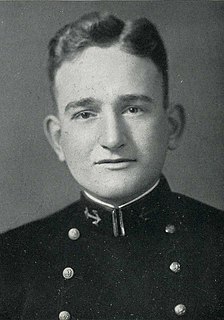This page is based on this
Wikipedia article Text is available under the
CC BY-SA 4.0 license; additional terms may apply.
Images, videos and audio are available under their respective licenses.

The Mare Island Naval Shipyard (MINSY) was the first United States Navy base established on the Pacific Ocean. It is located 25 miles northeast of San Francisco in Vallejo, California. The Napa River goes through the Mare Island Strait and separates the peninsula shipyard from the main portion of the city of Vallejo. MINSY made a name for itself as the premier US West Coast submarine port as well as serving as the controlling force in San Francisco Bay Area shipbuilding efforts during World War II. The base closed in 1996 and has gone through several redevelopment phases. It was registered as a California Historical Landmark in 1960, and parts of it were declared a National Historic Landmark District in 1975.

USS Nautilus (SSN-571) was the world's first operational nuclear-powered submarine and the first submarine to complete a submerged transit of the North Pole on 3 August 1958.

USS Marlin (SST-2), originally USS T-2 (SST-2), was a T-1-class training submarine in commission from 1953 to 1973. She was the second submarine of the United States Navy to be named for the marlin, a large game fish. Except for the first 25 early development pre-WWI subs, she was one of the smallest operational submarines ever built for the U.S. Navy.
A nuclear submarine is a submarine powered by a nuclear reactor. The performance advantages of nuclear submarines over "conventional" submarines are considerable. Nuclear propulsion, being completely independent of air, frees the submarine from the need to surface frequently, as is necessary for conventional submarines. The large amount of power generated by a nuclear reactor allows nuclear submarines to operate at high speed for long periods of time; and the long interval between refuelings grants a range virtually unlimited, making the only limits on voyage times being imposed by such factors as the need to restock food or other consumables.

USS Ray (SSN-653), a Sturgeon-class attack submarine, was the second ship of the United States Navy to be named for the rays.

USS Baya (SS/AGSS-318), a Balao-class submarine, was a ship of the United States Navy named for the baya.

USS Bremerton (SSN-698), a Los Angeles-class submarine, is the second vessel of the United States Navy to be named for Bremerton, Washington. The contract to build her was awarded to the Electric Boat Division of General Dynamics Corporation in Groton, Connecticut on 24 January 1972 and her keel was laid down on 8 May 1976. She was launched on 22 July 1978 sponsored by Mrs. Helen Jackson, wife of Henry M. Jackson, and commissioned on 28 March 1981 with Captain Thomas H. Anderson in command.

George William Grider was a United States Navy Captain, an attorney, and a Democratic U.S. Representative from Tennessee from 1965 to 1967.

Manitowoc Shipbuilding Company, located in Manitowoc, Wisconsin, was a major shipbuilder for the Great Lakes. It was founded in 1902, and made mainly steel ferries and ore haulers. During World War II, it built submarines, tank landing craft (LCTs), and self-propelled fuel barges called "YOs". Employment peaked during the military years at 7000. The shipyard closed in 1968, when Manitowoc Company bought Bay Shipbuilding Company and moved their shipbuilding operation to Sturgeon Bay.

Battleship Memorial Park is a military history park and museum located on the western shore of Mobile Bay in Mobile, Alabama. It has a collection of notable aircraft and museum ships including the South Dakota-class battleship USS Alabama and Gato-class submarine USS Drum. USS Alabama and USS Drum are both National Historic Landmarks; the park as a whole was listed on the Alabama Register of Landmarks and Heritage prior to that time, on October 28, 1977.

SCICEX, standing for Scientific Ice Expeditions, was a five-year (1995–1999) scientific research program involving a collaboration between the U.S. Navy and academic researchers from a variety of different universities. The object of study was geophysical and oceanological conditions in the Arctic Ocean. The Navy made available a nuclear submarine for each research cruise.
Two submarines of the Royal Netherlands Navy have borne the name HNLMS Zeeleeuw (S803), in honor of the Sea lion.

The Japanese destroyer Kamikaze was the lead ship of nine Kamikaze-class destroyers built for the Imperial Japanese Navy (IJN) during the 1920s. At the beginning of the Pacific War in December 1941, the ship was assigned to the Ōminato Guard District. She remained in northern Japanese waters until mid-1942 when she participated in the Aleutian Islands Campaign. Kamikaze continued to patrol northern Japanese waters until early 1945 when she was transferred to the Singapore area.
The Silent Service is an American syndicated anthology television series based on actual events in the submarine section of the United States Navy. The Silent Service was narrated by Rear Admiral Thomas M. Dykers, who retired from the Navy in 1949 after twenty-two years of service. He began each episode with this refrain: "Tonight, we bring you another thrilling episode of Silent Service stories, of warfare under the sea."

Hatsutaka was the lead vessel in the Hatsutaka-class of medium-sized minelayers of the Imperial Japanese Navy, which was in service during World War II. She was designed as an improved version of Shirataka anti-submarine netlayer. However, during the Pacific War, due to the critical shortage of escort patrol ships, she was fitted with depth charge racks, her minelaying rails were removed, and she was used primarily for convoy escort duties.













